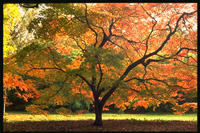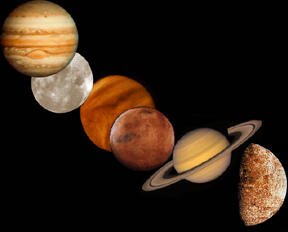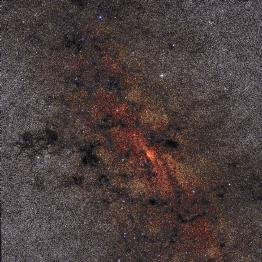Atlas Image of the center of the Milky Way obtained as part of the Two Micron All Sky
Survey (2MASS), a joint project of the University of Massachusetts and the Infrared Processing and
Analysis Center/California Institute of Technology, funded by the National Aeronautics and Space
Administration and the National Science Foundation.
Click on image for full size
Courtesy of Atlas Image mosaics by E. Kopan, R. Cutri, and S. Van Dyk (IPAC
Map of the Sky
News story originally written on July 17, 2000
Thanks to a couple of telescopes, everyone on the internet can browse through
almost 2 million images. Stars throughout the sky were photographed by the
Two-Micron All Sky Survey (2MASS) and are now available free of charge.
And just in case you don't think 2 million images is enough, another million
will be added by 2003. Click on the link below to start browsing. Happy star hunting!
You might also be interested in:

It was another exciting and frustrating year for the space science program. It seemed that every step forward led to one backwards. Either way, NASA led the way to a great century of discovery. Unfortunately,
...more
The Space Shuttle Discovery lifted off from Kennedy Space Center on October 29th at 2:19 p.m. EST. The weather was great as Discovery took 8 1/2 minutes to reach orbit. This was the United States' 123rd
...more
A moon was discovered orbiting the asteroid, Eugenia. This is only the second time in history that a satellite has been seen circling an asteroid. A special mirror allowed scientists to find the moon
...more
Will Russia ever put the service module for the International Space Station in space? NASA officials want an answer from the Russian government. The necessary service module is currently waiting to be
...more
A coronal mass ejection (CME) happened on the Sun early last month. The material that was thrown out from this explosion passed the ACE spacecraft. The SWICS instrument on ACE has produced a new and very
...more
J.S. Maini of the Canadian Forest Service called forests the "heart and lungs of the world." This is because forests filter air and water pollution, absorb carbon dioxide, release oxygen, and maintain
...more
In late April through mid-May 2002, all five naked-eye planets are visible at the same time in the night sky! This is includes Mercury which is generally very hard to see. You won't want to miss this!
...more















